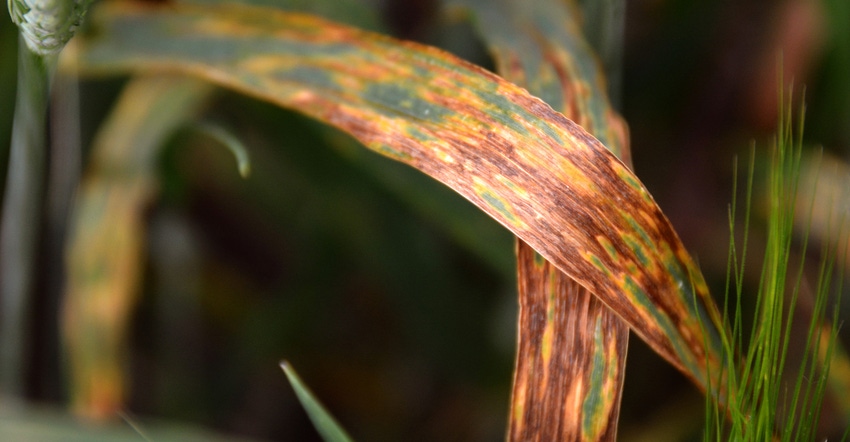
Fusarium head blight, known as scab, is the wheat disease that everyone worries about. But there’s another that’s a serious threat. Bacterial leaf streak can cut wheat yields by as much as 40%.
Wheat yield potential — the number of spikes per acre and the number of kernels per spike — are set early in the growing season. But during the grain filling period, the yield potential is realized. Unfortunately, that’s also when BLS rears its head.
“BLS is becoming increasingly prevalent in our area, and it can cost growers as much as 40% of their yields,” says Grant Mehring, northern region technical product manager for WestBred Wheat.
Bacterial leaf streak causes
BLS is caused by bacteria that enters wheat plants through leaf pores (stomata), or when the plants are damaged by wind, rain and hail.
BLS infections in July that burn most of the flag leaf have the potential to severely reduce yields because the wheat plant is so dependent on carbohydrates produced in the leaf by photosynthesis to fill the kernels.
Joel Ransom, North Dakota State University Extension agronomist, says that the flag leaf provides most of the carbohydrates that move into the kernels during grain fill.
“I have seen some recent information that suggests between 20% and 40% of the carbohydrates moved to the kernels during grain fill are produced by the tissues in the spike (glumes, awns and kernels themselves). The majority of the photosynthates must arise from the leaves (largely the flag leaf) and stem with an additional 10[%] to 15% of the carbohydrates being translocated from the stem,” according to Ransom in a 2019 North Dakota Crop and Pest Report.
Best defense
There’s no cure for BLS. Fungicides aren’t effective because they don’t have any activity on bacteria. The best defense is to plant BLS resistant varieties.
Scab resistance should still be first on your disease package list when you are selecting wheat varieties, Mehring says, but BLS resistance should be a close second.
Read more about:
Bacterial Leaf StreakAbout the Author(s)
You May Also Like






